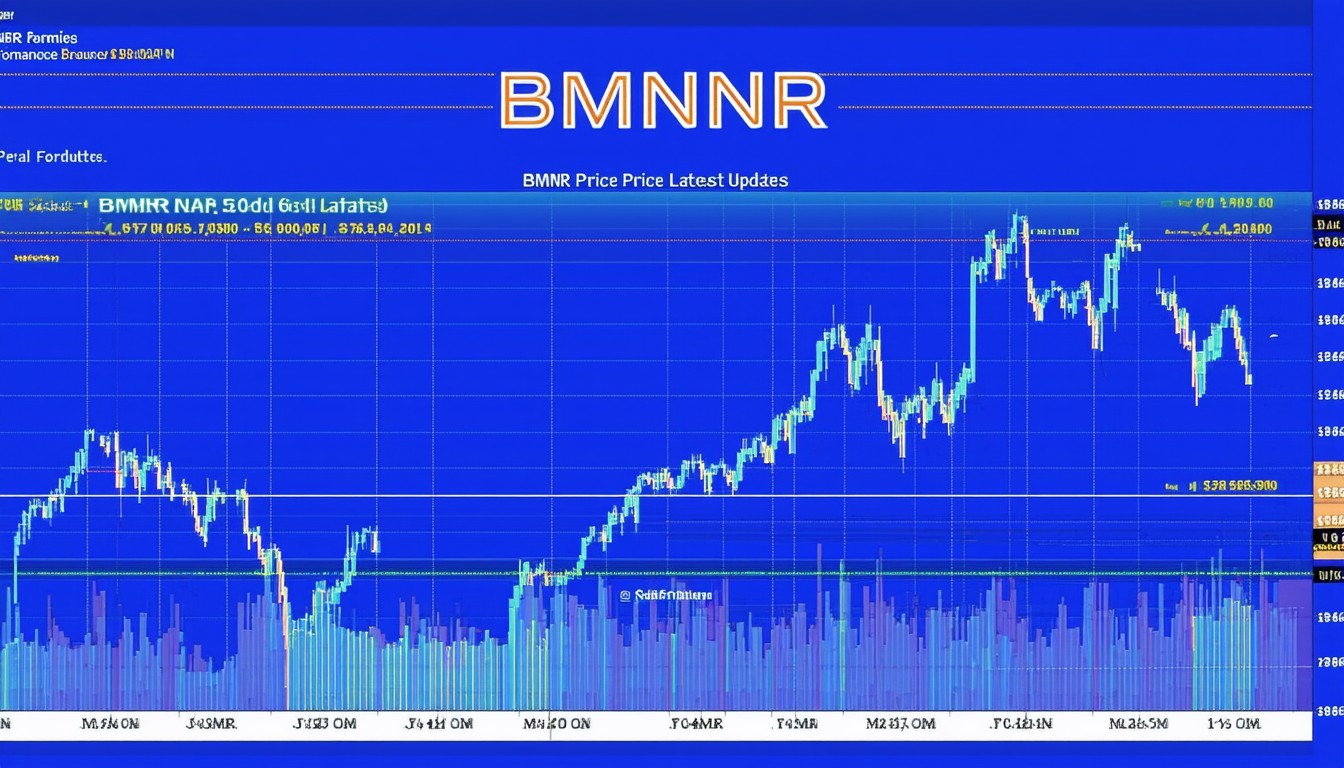The stock market continues to respond to dynamic forces—economic shifts, sector trends, and company fundamentals constantly interplay to shape prices. For those watching BMNR stock price movements, understanding not only the numbers but the story behind them provides an edge. Whether you’re a seasoned investor or a newcomer tracking BMNR, evaluating price action alongside company strategy and industry context is essential for sound decision-making.
Overview of BMNR: Company Profile and Market Context
BMNR, typically represented by its ticker symbol, holds a unique place within its industry. While the precise business description varies depending on the exchange and the jurisdiction, BMNR often operates in a specialized market niche—be that technology, manufacturing, resources, or another segment.
The company’s market capitalization, revenue streams, and core business activities are key factors investors routinely analyze to gauge relevance and growth prospects. In the face of rapid technological advances and evolving regulatory standards impacting many sectors, BMNR’s market position often reflects the agility and innovation of its management team.
Key Drivers Behind BMNR’s Stock Price
Several factors shape the daily and long-term price trajectory of BMNR stock:
- Earnings Announcements: Quarterly and annual reports highlight BMNR’s financial health, profitability, and outlook.
- Sector Trends: Broader moves within BMNR’s sector—whether driven by commodity prices, consumer demand, or regulatory change—often ripple into stock valuations.
- Macroeconomic Variables: Interest rates, inflation data, and global growth projections color investor sentiment and risk appetite.
- Company-Specific News: Mergers, leadership changes, or significant new contracts often trigger sharp price reactions.
According to market analysts, investors who follow BMNR closely look “beyond the headline numbers,” considering how operational efficiency, debt management, and innovation pipelines influence the company’s prospects and, thus, its share price.
“Understanding a stock’s price movement is as much about the company’s story and market conditions as it is about charts and financials,” notes a financial analyst with two decades following mid-cap equities.
Recent Performance of BMNR Stock
In the most recent fiscal period, BMNR experienced notable fluctuations, reflecting both internal developments and external market dynamics.
Quarterly Review: How BMNR Performed
Earnings releases show that, like many of its peers, BMNR navigated supply chain pressures and rising costs. The company’s revenue growth, or in some cases, contraction, frequently mirrors current consumer and business confidence levels within its sector. While BMNR’s exact numerical performance may vary between reporting cycles, management commentary has emphasized its focus on margin improvement and operating leverage.
- Share Price Volatility: Over the past year, BMNR’s stock has shown periods of pronounced volatility, typical for mid-cap or sector-focused shares. This has presented both risks and opportunities for active investors.
- Dividend Policy: For income-focused investors, BMNR’s approach to dividends—whether stable, growing, or suspended—remains a critical factor.
Comparing BMNR with Industry Peers
Relative valuation metrics such as P/E ratio, price-to-book, and EBITDA margins often help benchmark BMNR against its direct competitors. Many financial platforms report that BMNR trades at either a premium or discount depending on recent results and the overall sentiment toward its sector. Analyst consensus sometimes diverges, with bullish cases built on upcoming product launches or strategic initiatives, and more cautious outlooks pointing to sector headwinds or execution risks.
Technical Analysis of BMNR Stock Price
Charts and technical indicators add another dimension to understanding BMNR’s price patterns. While not a guarantee of future results, technical analysis can offer insights into likely support and resistance levels, trading sentiment, and potential breakout points.
Common Technical Indicators Used
- Moving Averages (MA): Short-term (20-day) and long-term (200-day) moving averages are often referenced to identify overall trends—whether BMNR is in a sustained uptrend or entering a consolidation phase.
- Relative Strength Index (RSI): RSI helps traders grasp whether BMNR is considered overbought or oversold, potentially signaling reversals.
- Volume Analysis: Sudden spikes in trading volume can accompany key news events or technical breakouts.
One technical strategist commented:
“For actively traded stocks like BMNR, watching the convergence of moving averages and volume shifts can offer actionable signals for short-term traders. Still, always combine technicals with fundamental analysis.”
Chart Trends & Sentiment
Historically, major news—such as acquisition rumors, earnings beats, or regulatory updates—has catalyzed sharp price moves for BMNR. These events typically result in increased trading volumes and intensified media coverage, often feeding into self-reinforcing price action over the short term.
Key Catalysts Impacting BMNR Stock Price
Aside from standard financial metrics, specific company and industry events prove influential:
- Product Launches or Partnerships: New offerings or strategic alliances can renew investor enthusiasm and boost expectations for future growth.
- Industry Disruption: Emergence of new technologies, evolving supply chains, or regulatory changes can force rapid reassessments of BMNR’s valuation.
- Leadership Announcements: CEO appointments, board reshuffles, or changes in senior management may be seen as either positive or negative, depending on the context.
In practice, investors pay close attention to company guidance and analyst updates following such milestones, as these often set the tone for subsequent quarters.
Investment Considerations for Potential and Current Stakeholders
Investing in BMNR—or any stock—requires balancing upside potential against downside risks. The following considerations are typically top of mind for market participants:
- Growth Potential: Is BMNR positioned to capture new markets, drive innovation, or expand margins?
- Financial Resilience: Does the company have the balance sheet strength to weather economic shocks?
- Valuation: Are shares attractively priced relative to peers and sector averages?
It’s crucial for investors to align their expectations with both near-term catalysts and BMNR’s long-term strategy. Active monitoring of both operational execution and market sentiment provides a firmer foundation for effective decision-making.
Conclusion: Navigating BMNR Stock’s Opportunities and Risks
Tracking the BMNR stock price requires more than glancing at the latest charts. Understanding the company’s fundamentals, market environment, and strategic direction is crucial for developing a well-rounded investment thesis. While recent volatility offers opportunities for nimble traders, long-term investors should focus on the business’s growth prospects and competitive positioning.

As market dynamics continue to evolve, staying informed about company updates, sector shifts, and broader economic trends will enable investors to navigate both the risks and opportunities that BMNR presents.
FAQs
What factors influence the BMNR stock price the most?
BMNR’s share price typically responds to company earnings, industry trends, macroeconomic news, and significant company announcements like leadership changes or new product launches.
How can I track the latest BMNR stock price?
BMNR’s real-time stock price is available on major financial news websites, stock trading apps, and through brokerage platforms that provide live market data.
Is BMNR a good dividend stock?
BMNR’s dividend policy may vary. It’s best to review the company’s most recent dividend announcements and financial reports to assess its consistency and yield.
How does BMNR compare to industry peers?
BMNR can be contrasted against peers using valuation ratios (such as P/E), growth rates, and profit margins to gauge relative performance and market positioning.
Are technical indicators useful for trading BMNR stock?
Yes, technical indicators like moving averages and RSI are commonly used by traders to spot trends and entry/exit points, but they should be combined with fundamental analysis for better results.
What are the main risks when investing in BMNR?
Key risks include sector volatility, unexpected company news, shifting economic conditions, and broader stock market downturns, all of which can impact BMNR’s price performance.







Leave a comment